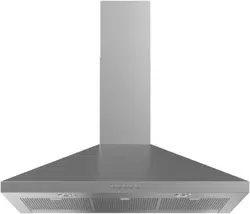Loading ...
Loading ...
Loading ...

4
Dimensions and
Clearances
A
B
C
D
E
G
F
AVN430SSB AVN436SSB
A 30” (76 cm) 36” (91.54 cm)
B 19
11
⁄16” (50 cm)
C
Max: 42
1
⁄8” (107 cm)
Min: 28
6
⁄16” (72 cm)
D
Max: 38
3
⁄16” (97 cm)
Min: 28
6
⁄16” (72 cm)
E 6” (15.24 cm)
F 7
3
⁄16” (18.3 cm)
G 8
3
⁄16” (20.8 cm)
Electrical Requirements
IMPORTANT
Observe all governing codes and ordinances.
It is the customer’s responsibility:
• To contact a qualied electrical installer.
• To assure that the electrical installation is adequate and
inconformance with National Electrical Code, ANSI/
NFPA 70— latest edition*, or CSA Standards C22.1-94,
CanadianElectrical Code, Part 1 and C22.2 No.0-M91 - latest
edition** and all local codes and ordinances.
• If codes permit and a separate ground wire is used, it is
recommended that a qualied electrician determine that the
ground path is adequate.
• Do not ground to a gas pipe.
• Check with a qualied electrician if you are not sure range
hood is properly grounded.
• Do not have a fuse in the neutral or ground circuit.
A copy of the above code standards can be obtained from:
National Fire Protection Association
1 Batterymarch Park
Quincy, MA 02169-7471
CSA International
8501 East Pleasant Valley Road
Cleveland, OH 44131-5575
IMPORTANT
• Save Installation Instructions for electrical inspector’s use.
• The range hood must be connected with copper wire only.
• The range hood should be connected directly to the fused
disconnect (Or circuit breaker) box through metal electrical
conduit.
• Wire sizes must conform to the requirements of the National
Electrical Code ANSI/NFPA 70 — latest edition*, or CSA
Standards C22.1-94, Canadian Electrical Code Part 1 and
C22.2 No. 0-M91 - latest edition** and all local codes and
ordinances.
• A U.L.- or C.S.A.-listed conduit connector must be provided
at each end of the power supply conduit (at the range hood
and at the junction box).
BEFORE INSTALLING THE HOOD
1. For the most efcient air ow exhaust, use a straight run or as
few elbows as possible.
I CAUTION:Vent unit to outside of building, only.
2. At least two people are necessary for installation.
3. Fittings material is provided to secure the hood to most types
of walls/ceilings, consult a Qualied Installer, check if they
perfectly t with your cabinet/wall.
4. Do not use ex ducting.
5. COLD WEATHER installations should have an additional back
draft damper installed to minimize backward cold air ow and
a nonmetallic thermal break to minimize conduction of outside
temperatures as part of the ductwork. The damper should be
on the cold air side of the thermal break. The break should be
as close as possible to where the ducting enters the heated
portion of the house.
6. Make up air: Local building codes may require the use of
Make-Up Air Systems when using Ducted Ventilation Systems
greater than specied CFM of air movement. The specied
CFM varies from locale to locale. Consult your HVAC
professional for specic requirements in your area.
Loading ...
Loading ...
Loading ...
